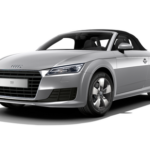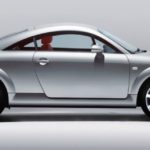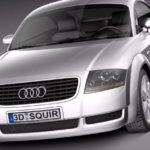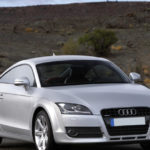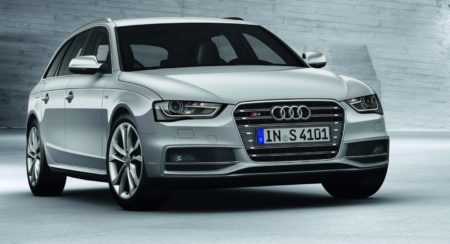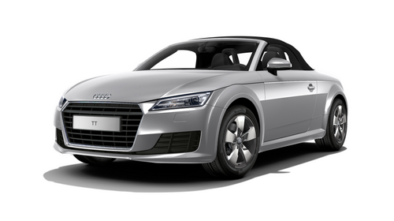Audi TT 8N 1998 - 2006 - Used, advantages, disadvantages
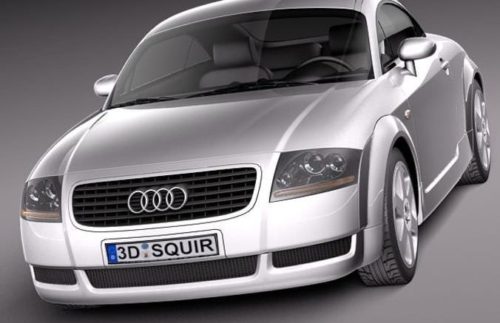
A
The first generation Audi TT was produced from 1998 to 2005.
The Audi TT 8N is based on the Volkswagen Group A4 platform used in the Audi A3.
The style of the Audi TT 8N was slightly different from the concept, with a new bumper line, with the addition of a rear small glass behind the door.
The Audi TT 8N is available as a 2 + 2 coupe, and a two-seater Roadster.
The Audi TT 8N gained a bad impression in the media due to a dozen accidents at high speeds. Fatal collisions at 180 km / h have been reported with rapid lane changes or sudden turns. The problem was a combination of unbalanced suspension and poor rear aerodynamics, which at high speeds caused uncontrolled drift, and in difficult situations, overturning.
Both the Audi TT 8N, the coupe and the Roadster were withdrawn from sale in the late 2000s in the early XNUMXs, to improve the predictability of the car’s behavior at very high speeds. Audi's Electronic Stability Program (ESP) was added, the suspension was changed, and the rear spoiler was added. All these changes will be subsequently incorporated into all future production batches.
Earlier Audi TT models came with front-wheel drive, but it is possible to change "on demand" for all-wheel drive, provided that the car has a minimum of 180 horsepower, which is the lowest possible power at which that drive would be optimal, and comes as standard on models with 225 horses and more.

A
Only first-generation petrol engines from 148 hp (1.8 T) to 247 hp (3.2 V6 quattro) were fitted to the first-generation Audi TT models. Its consumption is 8 - 11 l / 100 km.
In 2005, Audi released a coupe limited version called the Audi TT quattro Sport. The car has 237 hp, and is 75 kg lighter than its predecessors, and they achieved this by removing the spare wheel, rear shelf, rear seats, and air conditioning. The battery was also moved to the rear of the car to better distribute the weight of the vehicle.
It took 100 s to accelerate to 5.9 km / h and the maximum speed was electronically limited to 250 km / h.
Out of the planned 800, 1000 were sold.
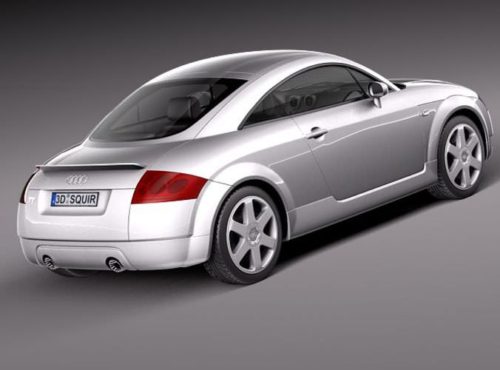
The Audi TT Roadster Quattro system used the first generation Haldex electrohydraulic system (LSC). Under normal conditions, 90% of the engine torque was directed to the front wheels, and if slippage occurs, up to 50% of the engine torque can be redirected to the rear wheels.
Models with the Quattro system are also equipped with an electric differential lock that can brake the wheel in motion to transfer torque to the opposite front wheel. This system is mostly used when cornering to reduce understeer (slippage of the car's front wheels).
Standard safety equipment in the first generation Audi TT includes two front airbags (driver and front passenger), ABS, electronic brake force distribution, electronic stability control, traction control and a pretensioner and limiter on the front seat belts.
Audi TT accessories included 17 "alloy wheels, six 226 W Bose stereo speakers, with CD player, air conditioning, leather / Alcantara combination seats, front fog lights, leather-wrapped steering wheel gearboxes, remote central locking, electric windows windows and electric mirrors, steering wheel height and tilt adjustment, alarm and lock.
Since 2002, the TT Roadster has come with Xenon headlights and wipers on them.
In 2007, Audi received a lawsuit accusing several major American law firms of loosening the toothed belt in the 1999-2003 model prematurely. They agreed that all previous and current owners of these models can replace the belt for free, and two more years are added to the four-year warranty.
Engines and models:
In 1995: Introduced Audi The TT Concept at the Frankfurt Motor Show and the reactions were so positive that a year later it got the green light to start making the series model.
In 1998: Audi TT put on sale but because of the great interest in Europe and America the car had to wait a long time. The starting engines were a 1.8 Turbo with 180hp and 225hp. The weaker models had 16 ″ wheels and a 5-speed transmission. while they are stronger with 17 ″ wheels and 6-speed gearbox. All models have four-wheel drive - 4WD. The TT Roadster debuted in August.
In 2000: The suspension was changed and a rear spoiler was added, all for criticism of the vehicle's high-speed behavior. A 6-speed gearbox becomes standard.
In 2001: Special TT S-line series presented in red or silver. This car comes with 18 ″ wheels, CD music and sports suspension.
You need to know before buying an Audi TT
- If your choice is an earlier model, make sure that corrections are made to the suspension and rear spoiler. Because of these issues, Audi called on the owners to contact an authorized service facility.
- lots of TTs that were stolen in Europe ended up on our roads as well. It is recommended that you only buy from trusted sellers.
- some cars had problems with the ignition, while at some at the maximum temperature there were problems with the cylinder.
- Analog air conditioners on a 180hp model should be serviced every couple of years
- The interior is quite good quality, but see if the electric controls of the driver's seat are completely correct.
Conclusion:
Although the TT with 225hp is faster, there isn't much difference that the engine will choose. For this reason, our recommendation is a 180hp model with a 6-speed gearbox. Choosing a coupe or with a roof is up to you and depends on your preferences.
Advantages - Audi TT 8N
- Excellent sports features, appearance
- Extreme durability after the above changes and the addition of spoilers
- Reliable electronics
- Quality of workmanship
- Optional all-wheel drive
Mane - Audi TT 8N
- The first TT TT models are uncertain at high speeds
- "Short" speeds
- Useless rear seat
- It loses power above 6000 rpm
Retrieved from:
auto-mane.com
Recommendation of similar texts:

Hi there, I am Mladen and I am an auto enthusiast. I started this blog years ago to help like minded people share information about latest cars, car servicing ideas, used car info, exotic cars, and auto technology. You will find helpful articles and videos on a wide variety of cars - Audi, Mercedes, Toyota, Porsche, Volvo, BMW and much more. Ping us if you have anything cool to share on latest cars or on how to make older cars more efficient, or just want to say hi!

